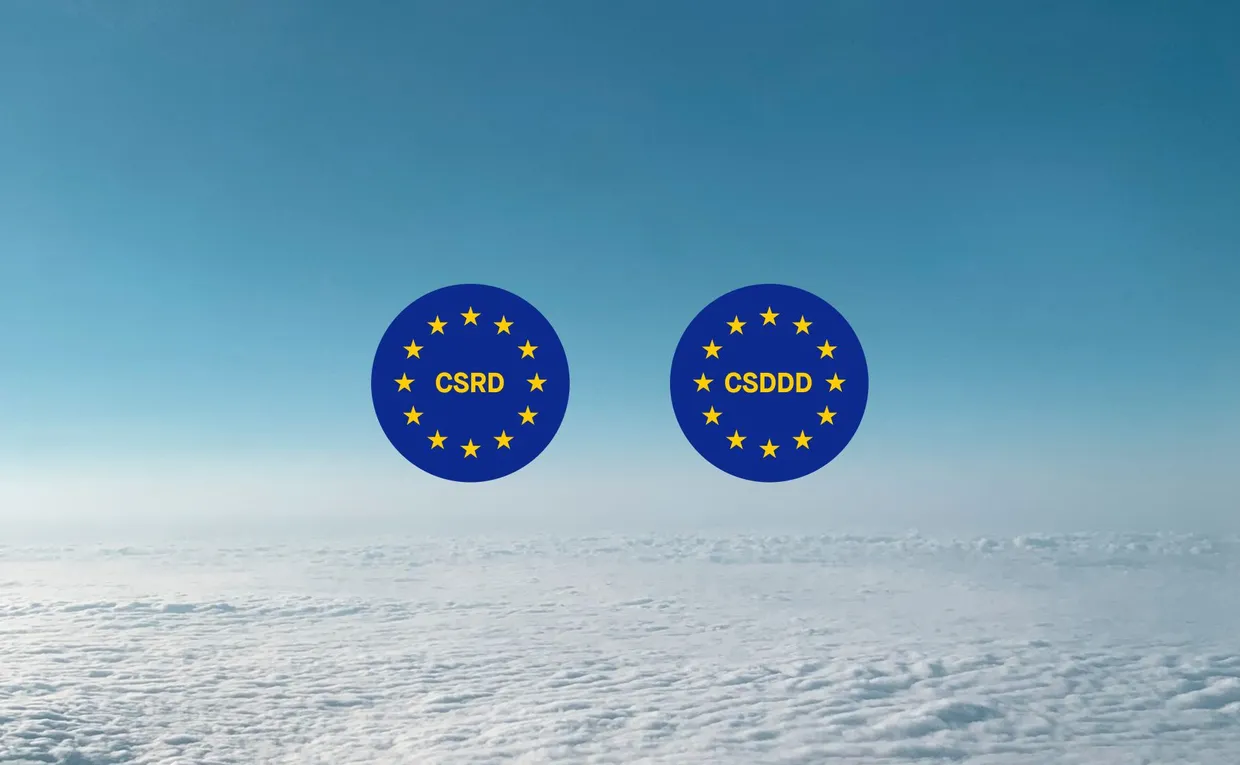The European Union (EU) has introduced a series of robust climate-related regulations to advance its sustainability goals, with the Corporate Sustainability Reporting Directive (CSRD) standing out as a significant piece of legislation. While primarily focused on EU-based companies, the CSRD’s reach extends beyond Europe, impacting non-EU businesses, including those based in the United States, that meet certain criteria. This directive mandates comprehensive corporate sustainability reporting, influencing how US companies with European operations must disclose environmental, social, and governance (ESG) data.
What is the CSRD?
The Corporate Sustainability Reporting Directive (CSRD) is an EU regulation aimed at increasing transparency and accountability in corporate sustainability practices. It was passed following a European Parliament vote in November 2022.
It replaces the Non-Financial Reporting Directive (NFRD) and significantly expands the scope and depth of the sustainability information that companies have to report. Under the CSRD, companies are required to disclose detailed information on how their operations impact the environment, society, and governance, as well as how these factors affect their financial performance.
The CSRD’s primary goal is to enhance the comparability and reliability of sustainability data across regions, enabling investors and other stakeholders to make more informed decisions. It is a key component of the EU’s broader climate strategy, which includes the European Green Deal and the commitment of member states to achieving carbon neutrality by 2050. By enforcing rigorous reporting standards, the CSRD seeks to ensure that companies contribute to the EU’s sustainability objectives and operate in a socially responsible manner.
Note that EU member states had to incorporate the CSRD’s requirements into their national law by July 2024.
Which companies are covered by the CSRD?
The CSRD applies to a wide range of listed companies, both within and outside the EU. Specifically, it targets:
- Large companies operating on the EU market: These are companies with more than 250 employees, a net revenue of €40 million or more, or total assets exceeding €20 million. All EU companies that meet these criteria are required to comply with the CSRD’s reporting obligations.
- Listed companies: All companies listed on EU stock exchanges, regardless of size, must adhere to the CSRD’s requirements.
- Non-EU companies with significant EU operations: This includes subsidiaries of non-EU companies, such as US-based businesses, that meet the above criteria. Additionally, non-EU companies with a significant presence in the EU—defined as generating more than €150 million in revenue within the EU for two consecutive financial years—are also covered by the CSRD.
For US companies, the CSRD directive means that if you have an EU-based subsidiary or significant operations within the EU, you must prepare to meet the directive’s stringent reporting requirements. This includes disclosing detailed ESG information in line with the standards set by the EU, which may differ significantly from US regulations.
Which US companies are affected by the CSRD?
The CSRD impacts a specific subset of US companies, particularly those with substantial business operations in Europe. You should consider whether your company falls within the scope of the CSRD requirements by evaluating the following criteria:
- EU subsidiaries: If your US-based company has a subsidiary in the EU that meets the CSRD thresholds—250 or more employees, €40 million in net revenue, or €20 million in total assets—your subsidiary will be required to comply with the CSRD’s reporting requirements.
- Significant EU presence: Even if your company does not have a subsidiary in the EU, you may still be affected if your business generates significant revenue within the EU. Specifically, if your company generates more than €150 million in revenue within the EU for two consecutive financial years and either has an EU subsidiary meeting the CSRD thresholds or has a physical presence in the EU with revenue exceeding €40 million, you will be required to report under the CSRD.
If your company is affected, you will need to align your sustainability reporting with the EU’s standards, which include comprehensive disclosures on environmental, social, and governance factors. This could require adopting new processes, investing in data collection systems, and ensuring that your sustainability reporting also meets the rigorous standards set by the EU.
What is the CSRD timeline?
The Corporate Sustainability Reporting Directive (CSRD) has a phased implementation schedule, impacting companies at different times based on their size, classification, and location. Here’s a breakdown of the timeline and key deadlines:
1. First companies already subject to the NFRD
- Who’s affected? Large companies with over 500 employees that were previously subject to the Non-Financial Reporting Directive (NFRD).
- When to comply? Fiscal years starting on or after January 1, 2024.
- Reporting deadline: These companies must include their first CSRD-compliant report in 2025, covering the 2024 fiscal year.
2. Large companies meeting size criteria
- Who’s affected? Companies that meet at least two of the following: over 250 employees, €50 million in turnover, or €25 million in total assets.
- When to comply? Fiscal years starting on or after January 1, 2025.
- Reporting deadline: The first CSRD report is required in 2026, covering the 2025 fiscal year.
3. Listed SMEs, small credit institutions, and captive insurance undertakings
- Who’s affected? Listed SMEs, small and non-complex credit institutions, and captive insurance undertakings.
- When to comply? Fiscal years starting on or after January 1, 2026.
- Reporting deadline: These entities must submit their first CSRD report in 2027, covering the 2026 fiscal year.
4. Non-EU companies with significant EU activity
- Who’s affected? Non-EU companies with a net turnover of more than €150 million in the EU and at least one subsidiary or branch in the EU that is subject to specific thresholds.
- When to comply? Fiscal years starting on or after January 1, 2028.
- Reporting deadline: The first CSRD report for these companies is due in 2029, covering the 2028 fiscal year.
What are the key differences between the CSRD and the SEC?
While both the CSRD and the US Securities and Exchange Commission (SEC) have introduced regulations to enhance corporate transparency on sustainability issues, there are several key differences between the two frameworks that US businesses and investors need to be aware of:
- Scope and coverage: The CSRD applies to a broader range of companies, including non-EU firms with significant operations in the EU, whereas the SEC’s proposed climate-related disclosure rules primarily target US-based public companies.
- Reporting requirements: The CSRD requires companies to report on a wide array of ESG topics, including climate change, human rights, and governance. In contrast, the SEC’s rules focus more narrowly on climate-related risks and their financial impacts on businesses.
- Materiality: The CSRD introduces the concept of double materiality, meaning companies must assess both how sustainability factors impact their financial performance and how their operations impact on social and environmental issues. The SEC, on the other hand, centers on financial materiality, requiring companies to disclose information primarily related to financial risks.
- Standards and frameworks: The CSRD mandates the use of European Sustainability Reporting Standards (ESRS), which provide detailed guidance on the information companies must disclose. In contrast, the SEC’s guidelines align with frameworks like the Task Force on Climate-related Financial Disclosures (TCFD) and the Greenhouse Gas (GHG) Protocol, focusing on specific climate-related disclosures without mandating a comprehensive set of standards.
- Verification and assurance: The CSRD requires third-party verification of reported information to ensure accuracy and reliability, while the SEC does not yet mandate such assurance, although it may encourage it.




